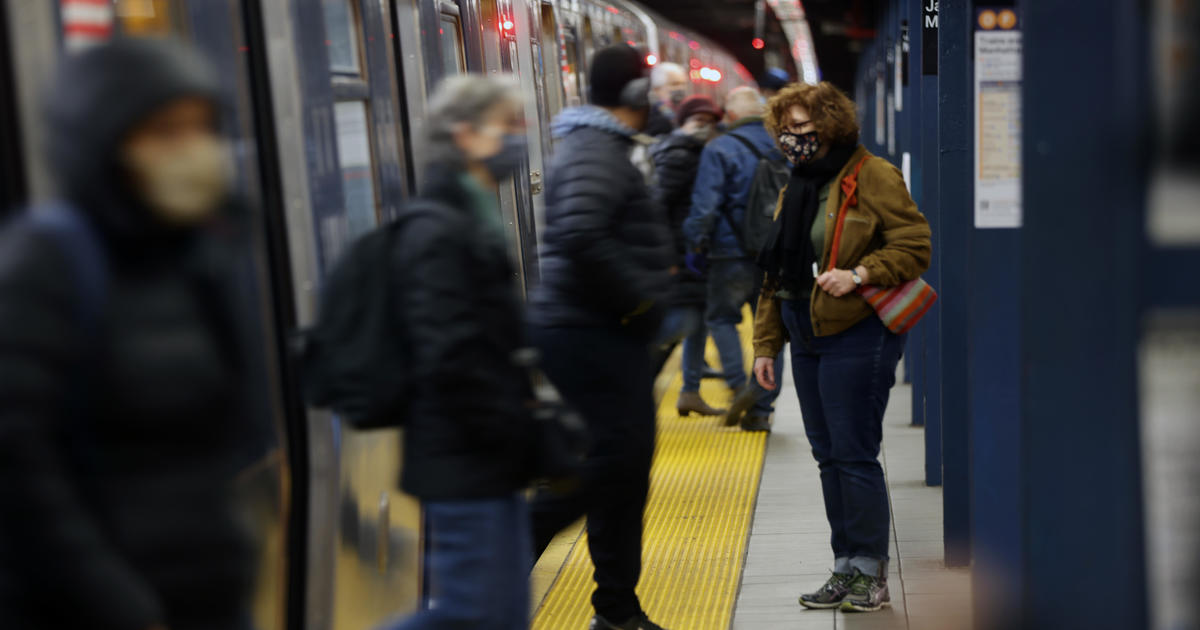
Millions of people in the northeast U.S. ride or work on subway systems every day. But while they’re doing so, they are breathing in dangerously high levels of particles that may cause heart attacks, aggravate asthma or even lead to premature death, according to a study published Wednesday in the journal Environmental Health Perspectives.
Researchers from New York University analyzed the presence of PM2.5, airborne particles roughly 30 times smaller than a single hair from your head, in 71 subway stations. They focused on levels present during both morning and afternoon rush hours in New York City, Boston, Philadelphia and Washington, D.C., some of the country’s largest public transportation systems, in 2019 — with the exception of Philadelphia, where the data was gathered in 2015.
The researchers found that commuters and subway workers in at least some of the stations breathe in pollutants that are high enough to increase the risk of adverse health effects. In many stations, the levels of PM2.5 far exceeded the Environmental Protection Agency’s safety standards.
PM2.5, shorthand for particles that are less than two and a half microns wide, usually form because of pollution from power plants, industries and automobiles. Being exposed to these particles can lead to heart issues, aggravated asthma, decreased lung function or even death for people who have heart or lung disease, the EPA said. The researchers noted, however, that it’s not yet clear if the underground PM2.5 is as toxic as the PM2.5 found in above-ground air.
EPA standards state that no area should have, on average, more than 35 micrograms per cubic meter of PM2.5 in any 24-hour period. But at the Christopher Street subway station in downtown Manhattan, New York, the PM2.5 level had a maximum real-time particle concentration of 1,499 micrograms per cubic meter — 77 times higher than the “typical concentration” of air pollution in outdoor city air and 42 times the 24-hour standard.
The researchers found that if a commuter spent 15 minutes on a subway platform and 40 minutes on the PATH train, which runs between New York and New Jersey, each day, their daily exposure would rise from 7.7 micrograms per cubic meter to 26.1 micrograms per cubic meter. That could lead to an 11% increase in risk of cardiovascular mortality — thought the researchers acknowledged that untested assumptions were made in that calculation, and said more research is needed on the impacts of frequent short-term exposure.
The researchers likened the PM2.5 levels to “sooty contamination from forest fires and building demolition.”
Dr. Terry Gordon, co-senior study author and a professor at NYU Langone, told CBS News his team was “surprised” by how high the levels were. They were so surprised, in fact, that they went back to the station multiple times to ensure it wasn’t just one instance of such extreme results.
“No subway system in the world, nobody has reported values as high as what we found in Christopher Street Station on the PATH system,” Gordon said.
“It’s the worst case scenario for those PATH stations. It was like a really bad day in Beijing or Delhi,” Gordon told CBS News. “[It’s] different particle types, and we recognize that, but still, the concentration of particles there is almost as bad as any day with a severe pollution episode in these Asian countries.”
On Tuesday, Beijing reported their PM2.5 concentration as 187 — which was deemed “very unhealthy” air quality if maintained for 24 hours.
With the exception of Christopher Street station’s extremely high levels, the subway stations studied had daily levels generally 2 to 7 times higher than EPA standards. New York had the highest amount of PM2.5 concentration, followed by Washington, D.C., Boston, and Philadelphia, respectively, though the authors noted that the New York stations were specifically chosen because they had been previously reported to have high PM2.5 levels.
“We weren’t really surprised we saw the inter-city differences,” Gordon said, “but we were surprised by how high some of the cities were.”
New York City subways have the seventh highest annual ridership in the world, according to the Metropolitan Transportation Authority, with 1.757 billion people. Roughly 60% of the city’s subways are underground. None of the representatives for the subway systems mentioned in the study could immediately be reached for comment.
The most immediate remedy is for people to wear masks when they use the subway system, Gordon said, even after COVID-19 is under control.
Hundreds of samples gathered by researchers suggest that a significant amount of the air in subway systems has particles may have derived from fossil fuels and train wheels grinding against the tracks. But Gordon said more research is needed to determine the exact source and the exact consequences of being exposed to these levels long-term, especially for people who have underlying health conditions and for transit workers who are exposed the pollutants for multiple hours, multiple days a week.
“We didn’t do those kind of calculations. We just did worst-case,” Gordon said. “But what if you did [commute in these locations] five days a week, year after year?”

